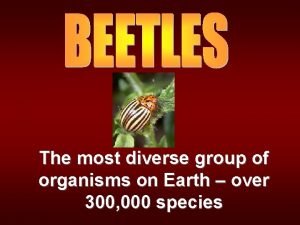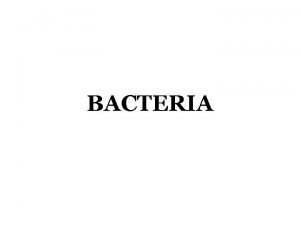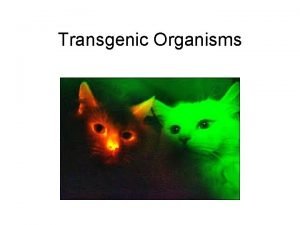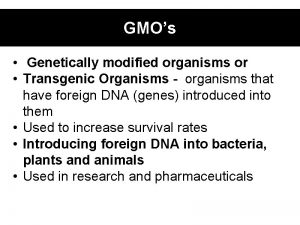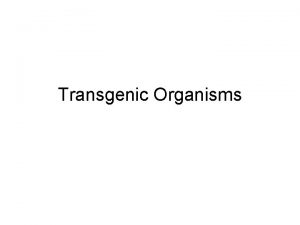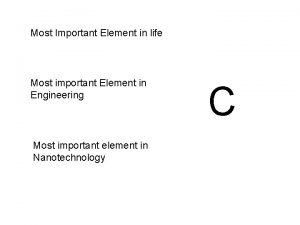Important Elements in Organisms What are the most










- Slides: 10

Important Elements in Organisms What are the most commonly occuring elements in the human body?

Goals for the day! ➔ By the end of class, you will make predictions about the six most common elements in organisms. ➔ Today you will share in collaborative groups about the six most common elements.

What’s an element? ➔ An element is something basic and important––in chemistry, an element is one of the essential molecules that everything else is made of. ➔ Examples of element include: __________________.


Biomolecules ➔ All living organisms are made of essential elements. ➔ We call these compounds biomolecules. All of these biomolecules are organic, which means that they contain carbon. ◆Carbon has four valence electrons, which means this element forms strong covalent bonds with many other elements.

Biomolecules ➔ All of our biomolecules are classified into four groups: ◆Carbohydrates (quick and short term energy) ◆Lipids (long term energy) ◆Proteins (building and work) ◆Nucleic Acids (genetic information) ➔ Each of these classes have different structures and functions.

Carbohydrates (15%) Carbohydrates are made up of carbon, hydrogen and oxygen (CHO). ➔ Examples include: Cellulose provides structure in plants; glucose (_____) is a accessible source of cellular energy for both plants and animals. ➔

Lipids (10%) Lipids are made up of carbon, hydrogen and oxygen. ➔ Fats are an accessible fuel source; phospholipids also make up cellular membranes. ➔

Proteins (50%) All proteins contain carbon, hydrogen, oxygen and nitrogen. ➔ Enzymes carry out almost all the chemical reactions that take place in cells. ➔

Nucleic Acids (18%) Nucleic acids contain carbon, hydrogen, oxygen, nitrogen, and phosphorus. ➔ DNA stores life's genetic code. ➔
 Mikael ferm
Mikael ferm From most important to least important in writing
From most important to least important in writing From most important to least important in writing
From most important to least important in writing Least important to most important
Least important to most important Why do organisms interact with other organisms
Why do organisms interact with other organisms Uni and multicellular organisms
Uni and multicellular organisms Most diverse group of organisms
Most diverse group of organisms What organisms are most numerous on earth?
What organisms are most numerous on earth? Contains the most diverse eukaryotic organisms
Contains the most diverse eukaryotic organisms 2 most important commandments
2 most important commandments The salamanca statement
The salamanca statement






